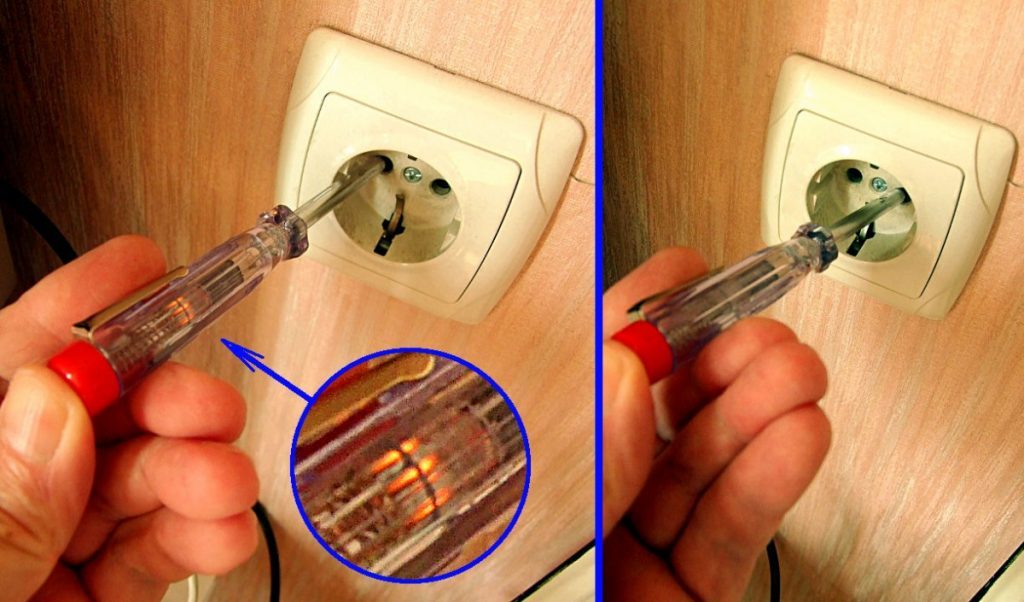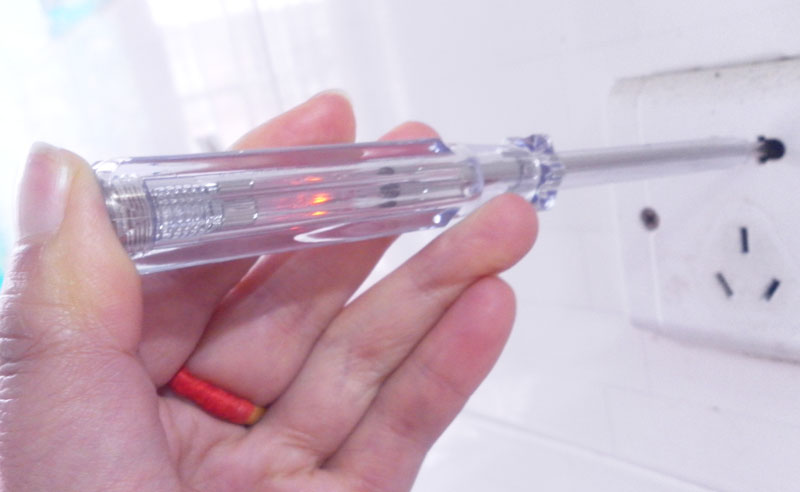How to use an indicator screwdriver
There are situations when there is a problem with electrical wiring and electrical appliances in the house. It is not always convenient to call a specialist every time: high fees for services, long waits. And in addition, it is not always advisable to do this, because many troubles can be eliminated on your own in just a few minutes. For example, if there is a loss of contact.
The main problem in such a situation is to find the problem area. For these purposes, a special tool was developed - an indicator screwdriver. It is distinguished by its reliability, versatility and accessibility. In today's material we will talk about this instrument.
The content of the article
Usage: how to check phase and zero
Now let's look at how to use an indicator screwdriver. Above all, remember safety. The basic rule is that any work on electrical networks must be carried out with the package switches turned off, which are located at the points of entry into the house or apartment. It is also necessary to check the functionality of the tool.
We must remember one of the basic properties of electric current: it always passes through the conductor with the least resistance from plus to minus. If the circuit is broken or blocked, then nothing will work.
The standard electrical network is single-phase.The voltage passes through one wire - the plus, which is called the phase. The second wire is zero, it leads to the transformer. The third wire in the outlet is grounding. It serves for our safety, because when voltage comes into contact with the metal body, it leads it “to the ground.”
To check where the phase is and where the zero is, you need to insert an indicator screwdriver into a working socket. If the tester does not have a battery, then you need to touch the surface with the sting and press the bulb with your finger, and then monitor the indicator readings.
If the light in the instrument lights up, then this wire is a phase wire. If the light does not light up when the indicator contacts, this indicates that there is no voltage in the network, or you have hit the neutral wire.
Checking the screwdriver
The method described above allows you to check the functionality of the screwdriver. If you know that the socket is working, but the light does not light up in any of the holes, then the tool is faulty. You can determine its performance in another way - using a light bulb, touching its tip with its sting. If the indicator lights up, then both the indicator and the light bulb itself are working.
There is also a non-contact way to check the functionality of a screwdriver, i.e. it does not involve direct contact with the conductor. The tool must be taken by the tip and brought with the tip (handle contact) to the socket. If the indicator light comes on, the tool is working properly and there is voltage in the circuit.
This method is also suitable for finding hidden wiring. True, as mentioned above, it has a small error. If there is reinforcement in the walls, it will distort the signal, which means this method is absolutely useless in the case of reinforced concrete walls.
How does it work
A standard indicator screwdriver has the following operating principle:
- during contact of the tip with the phase wire, an electric current flows through it;
- after the electric current has passed through the sting, it passes through a resistor whose resistance is 1 mOhm - in this case, the current strength is reduced to an indicator that is absolutely safe for humans;
- bypassing the resistor, the current passes through the built-in neon lamp, which contributes to the glow of the gas pumped inside;
- the remaining current goes into the ground through the body of a person using an indicator screwdriver.
Thus, the entire process of determining the presence of current in a certain section of the electrical circuit takes only a few seconds.
Types of instruments
There are several types of indicator screwdrivers. Let's take a closer look at each and consider the principle of their operation.
With integrated lamp
The simplest and most primitive indicator tool is a regular screwdriver with an integrated lamp. It does not have an active power source.
Its principle of operation is distinguished by its simplicity and originality. After voltage reaches the tip of the tip, it passes through a resistor that is built into the handle. After the resistor it goes to the lamp. A metal plaque is installed on the end part, which acts as a second contact.
In order to detect the absence or presence of voltage, the bulb must be closed with a finger at the moment when the tip of the tool touches the surface. This screwdriver is distinguished by its low price, since it allows you to determine only phase and zero.
Battery operated
Indicator screwdriver with battery. We can say that this is an improved previous version.It has a built-in battery that acts as a power source. The screwdriver is also equipped with a bipolar transistor. Such a tool is distinguished by the fact that it has an expanded set of capabilities, since it allows you to determine:
- phase and zero;
- find where the minus is and where the plus is in the vehicle;
- find the location of the break in the electrical circuit;
- check the functionality of the fuses.

In addition, such an indicator tool allows you to find hidden electrical wiring, although the error will be quite high.
To check the presence or absence of voltage, you no longer need to cover the metal plug with your finger. This screwdriver is the most popular, widespread and universal indicator tool.
Electronic tester
Tester with electronic unit and LCD screen. It is equipped with an audible alarm that is triggered when there is voltage in the mains. The most modern version of this type of instrument. The tester can determine the current voltage in the electrical network in the range from 12 to 220 volts. The LCD display shows the numerical value of the network voltage.
Reference. In essence, such a screwdriver is a multimeter, albeit in a very simplified design.
Many experts believe that buying such a tool is unjustified and there are two reasons for this:
- the cost of such a tester is 3–5 times higher than the cost of the previous version;
- If any of the elements breaks down, repairs will be an energy-consuming and time-consuming undertaking. Moreover, it is quite rare to find parts for such an indicator on the market, so if a malfunction occurs, you will have to buy a new tool.
The sound indicator is more practical. They can detect a break in the wire of the carrier; if you turn it on and unwind it, then move the indicator along the wire, then where it stops beeping, there is a break.
Plus and minus in AC power is strong!
The author is very far from electrical engineering; he tried to tell something, but got stuck mid-sentence with an abundance of errors.
All that remains is to add an enchanting addition at the end: contact specialists, such as a would-be electrician.
It is said that you can find the plus and minus on the vehicle. And there the current is constant. True, the minus is always put on the mass. Therefore it is irrelevant







Yes, this is a necessary thing everywhere. I use it all the time.